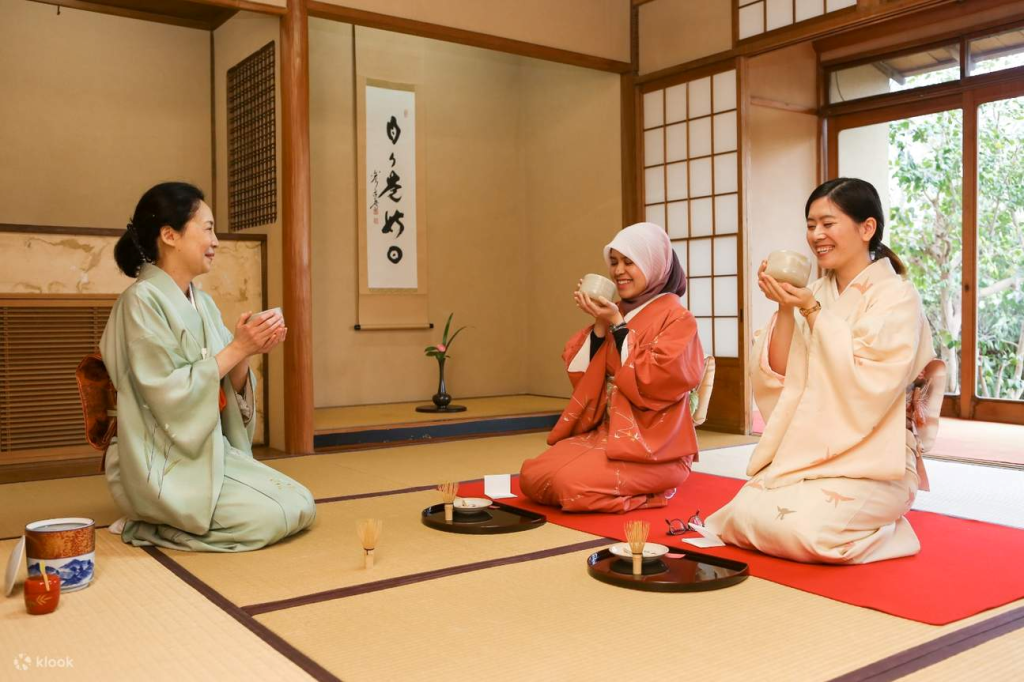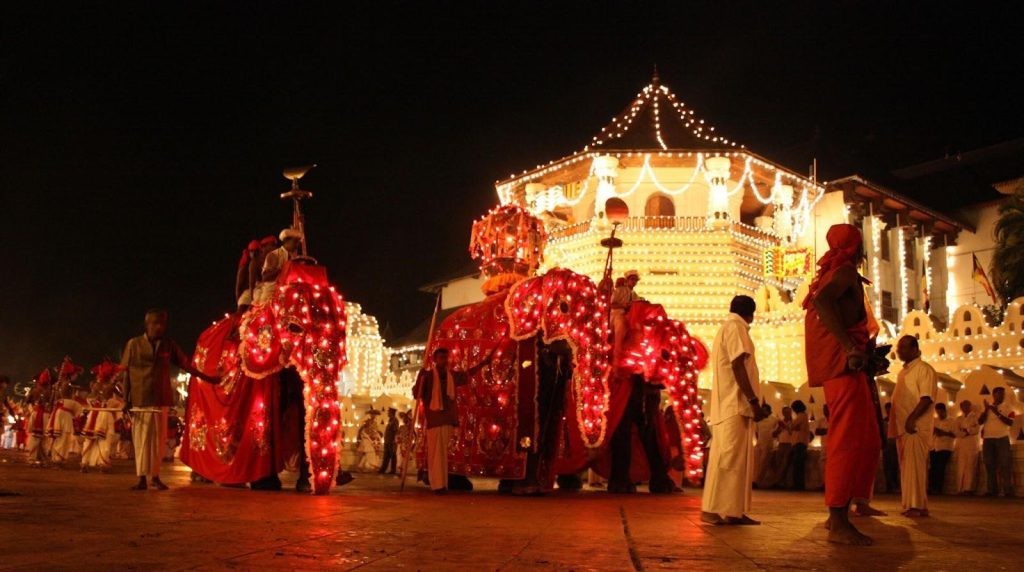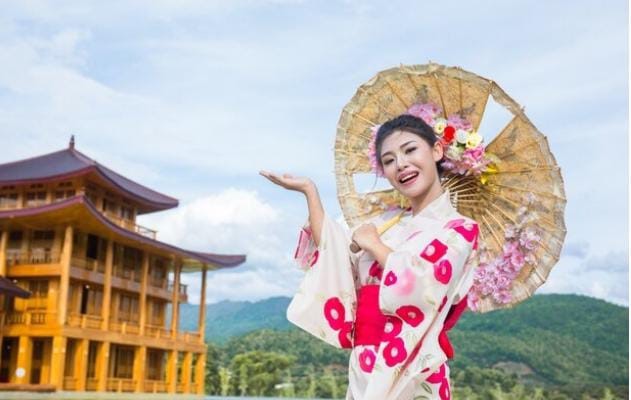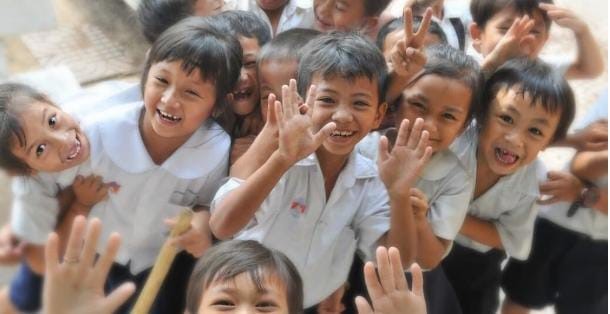The region has 31 countries, 11 in Central Asia and 20 in West Asia. The region’s population as of 2023 is over 376 million: over 78 million in Central Asia and over 298 million in West Asia. The West Asia region is also called the Middle East.
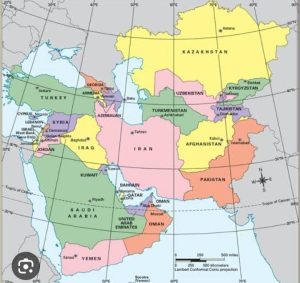
Central and West Asia are on the list of areas that are considered centers for civilization. The history and culture of these regions play a massive role in how greetings are done. The region’s huge population is also home to many ethnic groups, including the Persians, Turks, Arabs, Uzbeks, Kazakhs, Pashtuns, Tajiks, Kurds, and many more. These great numbers of cultures contribute to the region’s cultural diversity and influence how people greet each other.
Religion is critical in people’s lives in Central and West Asia. The region is known for its historical significance in developing and spreading significant religions, including Islam, Zoroastrianism, and various branches of Christianity. This religious diversity adds depth and complexity to greetings, as different faiths and cultural practices influence the customs of welcoming and showing respect.
Therefore, we will explore the fascinating world of Central and West Asia greetings and how history, tradition, and religions play a part. Ultimately, we will look at how the greetings show cultural diversity and its evolution and future in this digital age.
Understanding the Importance of Greetings in Central and West Asia
More than just a formality, greetings in Central and West Asia hold more profound meanings. They foster a sense of respect, warmth, and inclusivity, emphasizing the importance of human connection in these societies.
The Function of Greetings in Social Interactions
In Central and West Asia, greetings are more than just words exchanged. They act as social cues, signaling the desire for communication and establishing a friendly atmosphere. Greetings are a means of acknowledging each other’s presence and showing appreciation for one another. They create a sense of belonging, reinforcing social bonds and fostering a spirit of unity within communities.
When two individuals meet in Central and West Asia, gestures and pleasantries often accompany the greeting. For example, it is common for individuals to make eye contact and smile while exchanging greetings. This non-verbal communication further enhances the warmth and sincerity of the interaction.
Furthermore, greetings in this region often involve asking about one’s well-being and showing genuine interest in their life. It is not uncommon for individuals to inquire about each other’s families, health, and general welfare. This demonstrates deep care and concern for one another, highlighting the value of interpersonal relationships.
The Influence of Religion on Greetings
Religion has a profound impact on greetings in Central and West Asia. Islamic customs and traditions have shaped the way greetings are expressed in this region. For instance, in predominantly Muslim countries such as Iran and Afghanistan, greetings are often accompanied by a gentle handshake and the words “Assalamualaikum” (peace be upon you). This reflects the Islamic values of peace, compassion, and goodwill towards others.
Moreover, the influence of religion extends beyond the mere words spoken during greetings. It also encompasses the underlying principles of humility, modesty, and respect deeply ingrained in the culture. When greeting someone in Central and West Asia, individuals are encouraged to lower their gaze as a sign of humility and to avoid any physical contact that may be deemed inappropriate or disrespectful.
Additionally, religion plays a role in determining the appropriate greetings based on the hierarchical relationship between individuals. For example, when greeting someone of higher social status or age, using more formal and respectful language is customary. This demonstrates the importance of respect and honoring the other person’s position within the social structure.
Central Asian Greetings
Kazakhstan
With its rich nomadic heritage, Kazakhstan combines traditional elements with modern greetings. The people of Kazakhstan value warmth and hospitality, which is evident in their traditional greeting. When meeting someone, it is common to exchange a handshake accompanied by the phrase “Salemy tuzu.” This greeting signifies a friendly gesture and conveys a sense of well-being and genuine care for the other person.
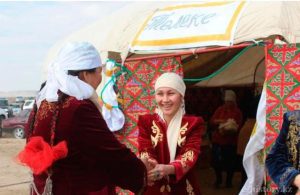
Kazakh people have also adopted more contemporary greetings as the country embraces modernity. In urban areas, you may come across greetings such as “Salem” or “Salam,” which are shorter versions of the traditional greeting. These abbreviated greetings reflect the fast-paced nature of city life while still maintaining the essence of Kazakh culture.
Uzbek
Uzbek greetings are characterized by their courtesy and emphasis on honor and respect. The people of Uzbekistan deeply value their cultural heritage, which is reflected in their greetings. When meeting someone, it is customary for Uzbek people to greet each other with a handshake and sometimes a slight bow and say “Assalomu Alaykum,” which means “Peace be upon you.”
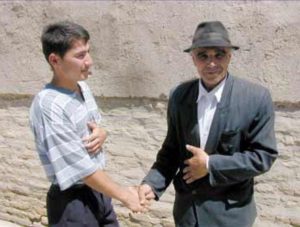
This traditional greeting holds great significance in Uzbek culture. It expresses a desire for peace and reflects the deeply ingrained values of kindness and humility central to Uzbek society. The exchange of greetings is considered an important social ritual, fostering a sense of unity and respect among individuals.
Uzbek greetings go beyond mere pleasantries; they acknowledge and honor the other person. It is common for Uzbeks to inquire about each other’s well-being and exchange kind words. This genuine interest in others’ welfare is a testament to Uzbek’s strong sense of community. It is key to note that men do not shake hands with women. Instead, they will nod their heads to each other.
Furthermore, Uzbek greetings extend beyond formal encounters. In everyday interactions, such as meeting friends or colleagues, Uzbeks often greet each other with a warm smile and a heartfelt “Salom,” which means “Hello.” This informal greeting reflects the friendly and welcoming nature of the Uzbek people.
West Asian Greetings
West Asia, often known as the Middle East, is renowned for its vibrant and diverse cultures.
The Significance of Greetings in Arabic Culture
In Arabic culture, greetings hold immense importance. Arabic speakers often greet each other with “As-salaam Alaykum,” meaning “Peace be upon you.” This greeting symbolizes the desire for peace and prosperity in personal relationships and society. It exemplifies the hospitality and generosity that Arabic culture is known for.
Turkey
Turkish greetings reflect the warm and welcoming nature of Turkish people. When meeting someone, it is customary to exchange greetings such as “Merhaba” (Hello), “Nasilsiniz”(How are you?) or “Selamün Aleyküm” (Peace be upon you). They pass their greetings mainly through handshakes. These greetings demonstrate the hospitality and friendliness of the Turkish culture, creating a positive atmosphere for further interaction.

The Impact of Greetings on Cultural Diversity
Greetings are crucial in promoting cultural diversity in Central and West Asia.
Greetings as a Tool for Cultural Exchange
When people from different cultures greet each other, it opens doors for cultural exchange and understanding. Greetings provide an opportunity to appreciate and learn about the customs and traditions of others. By embracing different greetings, individuals can develop respect for diverse cultures, fostering a sense of unity amidst cultural differences.
How Greetings Enhance Multicultural Understanding
Greeting someone in Central and West Asia goes beyond language barriers. Greetings serve as a bridge that connects people regardless of their cultural backgrounds. By acknowledging and respecting each other’s greetings, individuals demonstrate openness and willingness to understand and appreciate different cultures, promoting multicultural understanding and tolerance.
The Future of Greetings in Central and West Asia
As the world becomes more interconnected, Central and West Asian societies grapple with the challenges of preserving traditional greetings while adapting to the digital age.
Preserving Traditional Greetings in a Globalized World
Efforts are underway to preserve traditional greetings in Central and West Asia. Cultural institutions and initiatives aim to educate younger generations about the value and significance of greetings as a part of their heritage. By continuing to pass down traditional greetings, these societies ensure that their cultural identity remains intact, even in a rapidly changing world.
The Evolution of Greetings in the Digital Age
The digital age has revolutionized the way people communicate, including greetings. While traditional greetings are still valued, virtual platforms have introduced new forms of greetings, such as sending emojis or virtual messages. This evolving landscape raises questions about how these changes may impact the cultural significance of greetings in the long run.
Conclusion
Greetings in Central and West Asia hold tremendous significance, not just as simple words or gestures, but as a reflection of cultural identity, respect, and interconnectedness. Understanding and appreciating these greetings contribute to the region’s rich tapestry of cultural diversity while fostering unity and mutual understanding amongst individuals and communities.

